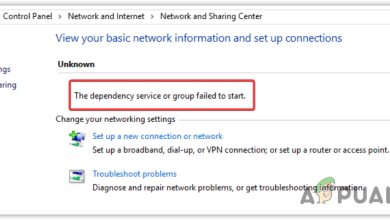Issues Setting up a HomeGroup on Windows 10
HomeGroups, first introduced as part of Windows 7, are Microsoft’s attempt at making networking easy and accessible for the average Joe. A Windows user can create a HomeGroup on their local network, and any computers connected to this network can join the HomeGroup. Computers that have joined a HomeGroup can share files and printers between them by simply making whatever they want to share available to the HomeGroup – no applications or additional wired connections required!
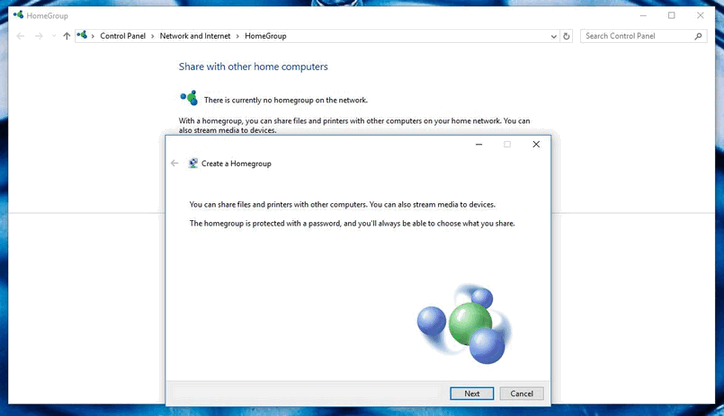
Naturally, the HomeGroup feature was also brought over to Windows 10. However, users have unfortunately been running into a plethora of issues using the feature. Some of the most common issues that Windows 10 users face (and which we’ll address) with HomeGroups include:
- Being unable to create a HomeGroup on a local network.
- Being unable to join or connect to a HomeGroup.
- Being unable to see or access other computers connected to a HomeGroup.
- Being able to create new HomeGroups on a local network but being able to join existing ones.
- Being unable to detect HomeGroups that already exist on a local network.
What causes issues while setting up and using a HomeGroup on Windows 10?
- HomeGroup services being disabled – If the Windows services that make HomeGroups tick are disabled on your computer, you’ll definitely be running into trouble.
- Inadequate permissions for HomeGroup system files – If the system files responsible for the HomeGroup feature don’t have have sufficient permissions, there’s a good chance you won’t be having a good time trying to use the feature.
- Leftover configurations or system files from an old HomeGroup – In some cases, leftover files from an old HomeGroup that has been deleted can prevent the user from creating a new HomeGroup from the computer. Affected computers can, however, still join existing HomeGroups.
- A faulty or incorrectly configured HomeGroup – If a HomeGroup isn’t configured correctly, it won’t work like it’s supposed to. HomeGroups aren’t perfect, and so sometimes, a HomeGroup just turns out to be faulty – all you can do then is scrap the HomeGroup and start anew.
- IPv6 being disabled – While you can have a perfectly working internet connection on your computer with IPv6 disabled, you won’t be able to use the HomeGroups feature. In order for a HomeGroup to function, all the computers connected to it must have IPv6 enabled.
- The wrong date and/or time – Sometimes, it’s the most inconsequential things that drive outcomes. Something as simple as the affected computer having the wrong date and/or time could be the reason why it’s running into problems using the HomeGroup feature.
- Compatibility issues between a computer and the HomeGroup it is trying to join – In some cases, either the computer or the HomeGroup it is trying to join have a bone to pick with the other, resulting in misery for the user.
How to Fix common HomeGroup issues?
Users can face a number of different issues when dealing with HomeGroups on Windows 10, and so there are just as many possible solutions as there are problems. The following are the most effective solutions you can use to try and fix an issue with Windows 10’s HomeGroup feature:
Make sure the affected computer has the right date and time
As bizarre as it may sound, you could be having a nightmare of a day with HomeGroup simply because the computer you’re using has the wrong date and/or time. To make sure the affected computer has the right date and time configured, simply:
- Locate the clock in the right side of your computer’s Taskbar and right-click on it.
- Click on Adjust date/time in the resulting context menu.
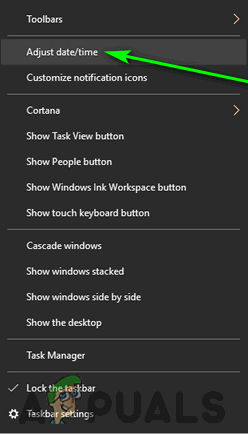
Click on Adjust date/time - Disable the Set time automatically option by turning off the toggle underneath it.

Click on the toggle under the Set time automatically option to disable it - If you would like Windows 10 to automatically set the right time for you, enable the Set time automatically option after a few seconds. If you would like to configure the right date and time yourself (which is actually recommended), click on Change under Change date and time.
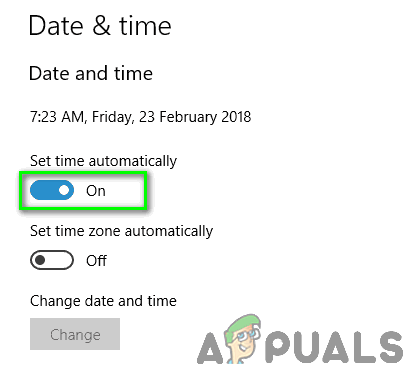
Enable the Set time automatically option
Ensure you have the right password for the HomeGroup
If a HomeGroup already exists on your local network but other computers are unable to join it, there’s a chance you’re using the wrong password to try and join the HomeGroup. A computer can’t just join an existing HomeGroup willy-nilly – you need to type in the password for the HomeGroup you want to join in order to be granted access. Knowing an (even slightly) incorrect password is the same as not knowing a password at all, as you won’t be able to join the HomeGroup in either case. That being the case, be sure to double-check that you have the right password for the HomeGroup you are trying to join. Know that you’ll have to do so on the computer the HomeGroup in question was created on.
Change the affected computer’s name
Changing your computer’s name is an amazing way to get rid of any inherent incompatibilities between the computer and the HomeGroup you are trying to join. Once your computer’s name has been changed, the HomeGroup will treat it as a completely new computer with no bad blood between them. To change a Windows 10 computer’s name, you need to:
- Press the Windows Logo key + S to initiate a Search.
- Type “name” into the Search field and press Enter.
- Click on the search result titled View your PC name.
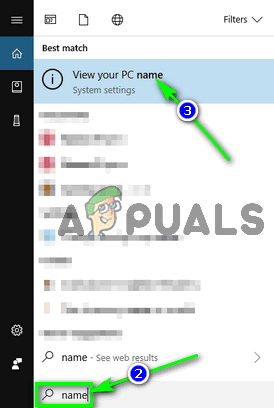
Search for “name” and click on View your PC name - Click on Rename this PC.
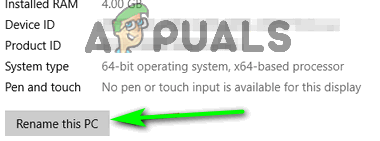
Click on Rename this PC - Type in a new name for your computer.
- Click on Next.
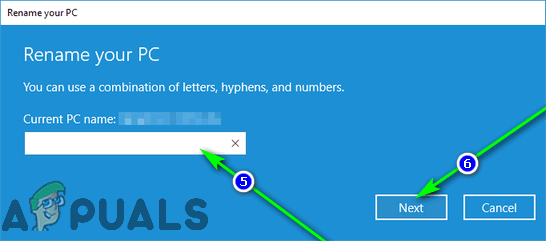
Type in a new name for your computer and click on Next - Follow the onscreen instructions, and once your computer’s name has been changed, restart it to have the changes take effect.
Once the computer boots up, you should be able to successfully connect to the HomeGroup you previously couldn’t join. If any other computers on your network are experiencing the same problem, you are going to have to repeat the steps listed and described above for each of them.
Make sure that all core HomeGroup services are enabled and running
There are a number of different system services that the HomeGroup feature depends on to function properly, and each of these needs to be enabled and running for a Windows 10 computer to create, join, or use a HomeGroup. In order to make sure that all core HomeGroup services are enabled and running, you need to:
- Press the Windows Logo key + R to open a Run dialog.

Press the Windows Logo key + R to open a Run dialog - Type services.msc into the Run dialog and press Enter to launch the Services utility.
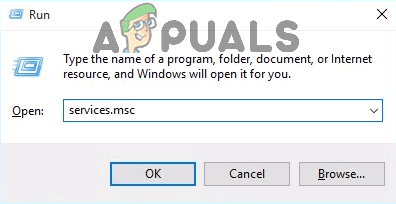
Type “services.msc” into the Run dialog and press Enter - One by one, locate and double-click on the following services in the list:
Peer Networking Grouping
Peer Networking Identity Manager
Homegroup Listener
Homegroup Provider - For each service, make sure the Startup type is set to Automatic.
- Make sure that each service is currently running on the computer. If it is not already running, click on Start.
- Click on Apply and then on OK.
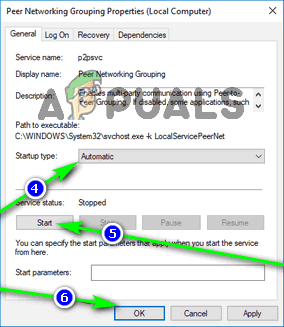
Set the Startup type to Automatic, click on Start, click on Apply, and click on OK - Check to see if the issue you were facing still persists.
Have IPv6 enabled on all of the computers
Windows’ HomeGroup feature requires IPv6 to work. You don’t need IPv6 enabled on your computer in order to have a working internet connection on it, but you do need it enabled if you want to create, join, or use a HomeGroup on your local network. If you’re running into problems setting up or using a HomeGroup, make sure you have IPv6 enabled on the computer(s) you are experiencing these problems on.
Grant Full Control of the PeerNetworking and MachineKeys folders to all users
- Press the Windows Logo key + E to launch the Windows Explorer.
- One by one, navigate to each of the following directories, replacing X with the drive letter corresponding to the partition of your hard drive Windows is installed on:
X:\ProgramData\Microsoft\Crypto\RSA
X:\Windows\ServiceProfiles\LocalService\AppData\Roaming\PeerNetworking - In these directories, locate and right-click on the MachineKeys folder and the PeerNetworking folder respectively, and click on Properties.

Click on Properties in the context menu For each of these folders:
- Navigate to the Security tab.
- Click on Edit….
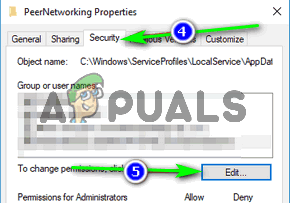
Navigate to the Security tab and click on Edit… - Click on Everyone under the Group or user names section.
- Under the Permissions for Everyone section, check the Allow checkbox next to the Full Control option.
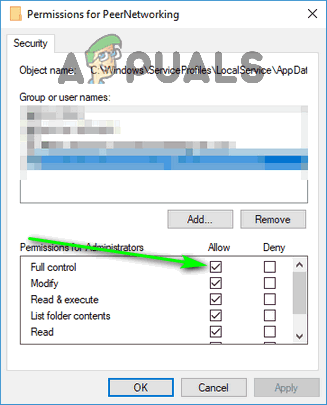
Check the checkbox for Allow next to the Full control option - Click on Apply and then on OK.
Rename the MachineKeys folder
If the PeerNetworking folder is the heart of the HomeGroup feature, the MachineKeys folder is its soul. Renaming the MachineKeys folder will force Windows to create and populate a new MachineKeys folder, resolving authority issues or any issues involving file permissions.
- Press the Windows Logo key + E to launch the Windows Explorer.
- Navigate to the following directory, replacing X with the drive letter corresponding to the partition of your hard drive Windows is installed on:
X:\ProgramData\Microsoft\Crypto\RSA - Locate the folder titled MachineKeys and right-click on it.
- Click on Rename in the resulting context menu.
- Type in a new name for the folder. It can be anything you want – something like MachineKeys-old will do just fine.
- Press Enter.
- Right-click on an empty space within the Windows Explorer menu, hover over New in the resulting context menu and click on Folder.
- Type in MachineKeys as the new folder’s name, and press Enter.
- Right-click on the new MachineKeys folder and click on Properties.
- Repeat steps 4–8 from Solution 6 above, and grant Full Control of the MachineKeys folder to everyone that needs it.
Delete the contents of the PeerNetworking folder and create a new HomeGroup
Leftover files from older HomeGroups that have already been deleted can prevent a Windows 10 computer from creating a new HomeGroup, and can also stop HomeGroups created on affected computers from being visible to other computers on the network. Deleting files from previous HomeGroups won’t affect any future HomeGroups you create as the PeerNetworking folder is populated with new files every time a HomeGroup is created.
Note: If the affected computer is already part of a HomeGroup, right-click on the Start Menu button to open the WinX Menu, click on Control Panel, search the Control Panel for “homegroup“, click on Leave the homegroup… in the HomeGroup settings, and confirm the action. Repeat this process for all computers on the HomeGroup before proceeding.
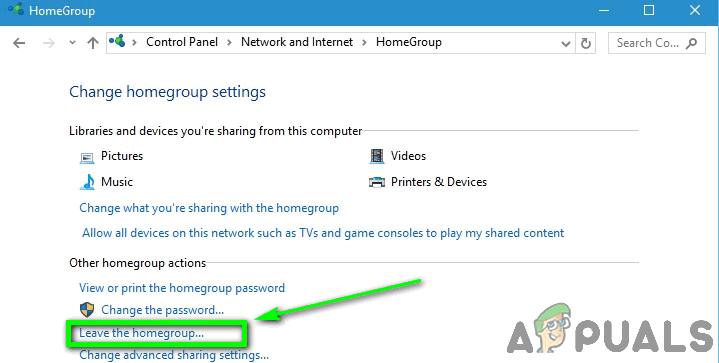
- Press the Windows Logo key + E to launch the Windows Explorer.
- Navigate to the following directory in the Windows Explorer, replacing X with the drive letter corresponding to the partition of your hard drive Windows is installed on:
X:\Windows\ServiceProfiles\LocalService\AppData\Roaming\PeerNetworking - Press Ctrl + A to select all of the files and folders within the PeerNetworking folder.
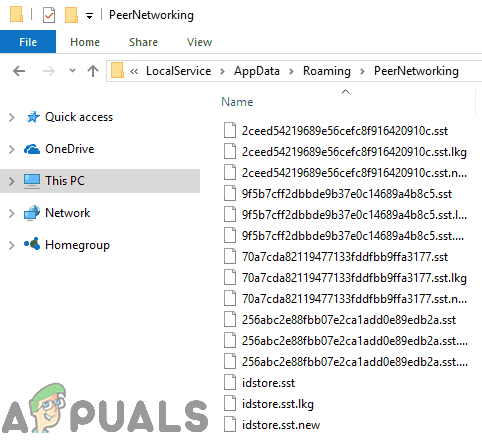
- Right-click on the selection.
- Click on Delete in the resulting context menu.
- Click on OK to confirm the action.
- Repeat the steps listed and described above for every single computer on the affected HomeGroup.
- Turn all of the computers off.
- Boot up the computer that was previously unable to create a new HomeGroup, and try creating a HomeGroup. Not only should the HomeGroup now be created successfully, it should also be visible to all other computers on the network.





